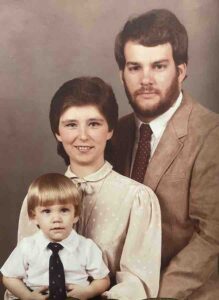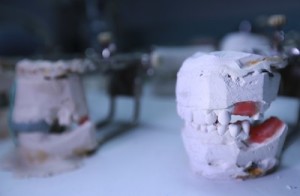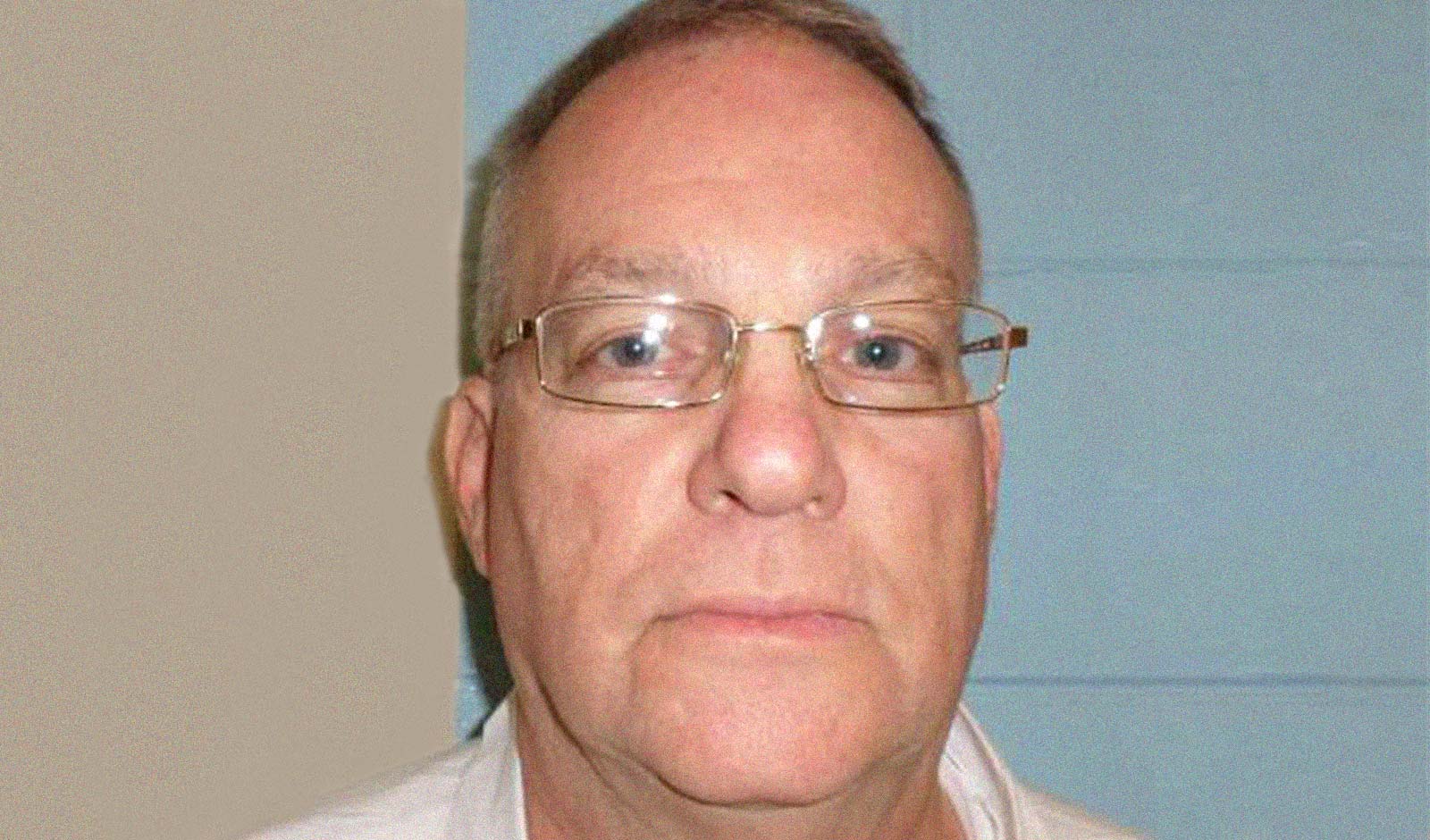Charles McCrory Is an Innocent Man Incarcerated for Over 35 Years in Alabama — Here’s What You Need to Know
He’s been wrongly incarcerated because of a “bite mark” that forensic dentists agree is not a bite mark.
02.17.22 By Innocence Staff
Updated on March 1, 2022: Attorneys for Charles McCrory filed a motion to reconsider the order from the Circuit Court of Covington County, Alabama denying Mr. McCrory relief after 37 years in prison.

Charles McCrory with his wife Julie Bonds, and their son Chad. (Image: Courtesy of the McCrory family)
In 1985, Innocence Project and Southern Center for Human Rights client Charles McCrory was wrongly convicted for the murder of his wife Julie Bonds in Andalusia, Alabama. Mr. McCrory, who found his wife dead in their home, quickly became a suspect in the case and never had a chance to grieve her loss or console their infant son. Mr. McCrory maintained his innocence from the beginning and immediately complied with police and investigators. Sensing the District Attorney did not have a strong case against Mr. McCrory, Ms. Bonds’s family hired private attorneys Frank Tipler and his son Harvey Tipler to prosecute the case instead. The key evidence in the case against Mr. McCrory was testimony from dentist Dr. Richard Souviron, who said a “bite mark” on Ms. Bonds’s body matched her husband’s teeth. Dr. Souviron has now recanted that opinion and denied the injury was a bite mark at all. Two additional forensic dentists also provided sworn testimony that the injury was not a bite mark. In fact, “bite mark” evidence is now considered unscientific evidence and a leading contributor of wrongful convictions.
Despite no other evidence connecting Mr. McCroy to the crime, he was sentenced to life in prison and has suffered almost four decades of wrongful incarceration.
On February 14, 2022, the Circuit Court of Covington County, Alabama, denied Mr. McCrory’s petition that sought relief based on new evidence that proves his innocence.
Read 10 key facts about this case to help fight for justice for Mr. McCrory.
1. The only evidence that connected Mr. McCrory to the crime was a “bite mark” on his wife that Dr. Souviron had allegedly found and linked to Mr. McCrory’s teeth. Dr. Souviron has since recanted that testimony, and no other evidence connects Mr. McCrory to the crime.
At the 1985 trial, Dr. Souviron testified that a bite mark on Ms. Bonds’s body matched her husband’s teeth. He has since recanted this evidence in a sworn statement. He and two independent experts also now agree that the testimony never should have been presented to a jury because the injury was never an actual bite mark.
At trial, the Tiplers relied on testimony stating that a car that looked like Mr. McCrory’s may have been near the crime scene. However, evidence from the 2021 hearing demonstrated that it would have been nearly impossible to have observed any vehicle from the witness’s vantage point.

No other evidence at trial was presented that connected Mr. McCrory to killing his own wife — not an eyewitness, not a confession, not forensic evidence. At the time of the trial, there were no known wrongful convictions attributable to the use of bite mark evidence. Without the alleged bite mark, Mr. McCrory would not have been convicted. Today, at least 36 innocent people have been wrongfully convicted through the use of bite mark evidence and have lost a total of 400 years behind bars. Nearly all of these wrongful convictions occurred during the era of Mr. McCrory’s trial.
2. Hair in Ms. Bonds’s hand did not match Mr. McCrory.
Hairs clutched in Ms. Bonds’s hand were examined, presumably because they were pulled from the attacker’s hands during the violent struggle. Those hairs were conclusively determined not to belong to Mr. McCrory or Ms. Bonds.
3. A red bandana like the one worn by Alton Ainsworth, who committed a similar home invasion and rape five weeks after the murder, was found at the crime scene. He worked at a construction site next to the victim’s house.
Alton Ainsworth worked at a construction site next door to Ms. Bonds’s home. He was known for wearing a red bandana similar to the one found next to her body. Evidence showed an open window and a nearby footprint, indicating a likely home invasion by the attacker. Five weeks after the murder of Ms. Bonds, Mr. Ainsworth committed a home invasion and rape, similar to what had happened to Ms. Bonds, and was sentenced to 20 years in prison. He has never been charged in relation to her murder.
4. The county did not prosecute the case — private attorneys did because Ms. Bonds’s brother hired them.
The Covington County District Attorney did not prosecute the case. Instead, Frank Tipler and his son Harvey Tipler, private attorneys, were hired by Ms. Bonds’s family to prosecute Mr. McCrory, because Ms. Bonds’s family believed the local county prosecutors were insufficiently invested in Mr. McCrory’s guilt. This is a rare occurrence but permitted under Alabama law.
5. Key evidence that could have exonerated Mr. McCrory was destroyed.
The physical evidence in the case, including the red bandana, was destroyed. The Innocence Project has helped free more than 200 people from prison using DNA testing, but the absence of this key evidence makes justice for Mr. McCrory extremely challenging, especially because, in this case, the State used the lack of DNA evidence against him.
6. Mr. McCrory has maintained his innocence for 40 years.
When he was wrongly convicted, Mr. McCrory had no previous history of violence or criminal record. The day he found his wife murdered, he cooperated with police and consented to a search of his own body, home, and vehicle. No incriminating evidence was found, despite that he was alleged to have just committed a brutal murder. He consistently explained his whereabouts at the time of the murder and testified on his own behalf at trial. At the time of the incident, Mr. McCrory was a loving father and Information Technology consultant, who had earned a college degree and served as a volunteer Emergency Medical Technician. His son, now grown, fully supports his father’s innocence.
7. In April 2021, the current District Attorney offered Mr. McCrory a plea to time-served, but he refused it.
In an effort to avoid an evidentiary hearing in this case, the current District Attorney Walt Merrell offered Mr. McCrory a “time served” plea just moments before the 2021 hearing, but Mr. McCrory turned the offer down because he would not admit guilt for something he didn’t do. Although Mr. McCrory denied the offer, many innocent people are actually often pressured into plea deals and do accept pleas to avoid a harsher punishment and for various other reasons.
8. At an evidentiary hearing in April 2021, Mr. McCrory presented evidence from three forensic dentists who agreed that the injury to the victim was not a bite mark.
At the evidentiary hearing before Judge Short in Andalusia, Alabama, in April 2021, two forensic dentists corroborated Dr. Souviron’s recantation and testified not only that the injury to Ms. Bonds was not inflicted by Mr. McCrory’s teeth, but also that it was not even a bite mark in the first place. In addition, attorneys for Mr. McCrory demonstrated why none of the other evidence presented against him at trial pointed to his involvement in the crime. In response, the current District Attorney Walt Merrell re-read the original trial testimony and had no response to the new evidence pointing to Mr. McCrory’s innocence.
9. The court took nearly a year to write its opinion — only to simply sign the prosecutors’ proposed findings of fact against Mr. McCrory.
Following the evidentiary hearing seeking a new trial in 2021, the court issued a decision on February 14, 2022. In this decision, however, the judge simply signed a short set of proposed findings written by the prosecutors. Though experts at the hearing had unanimously testified that the injury was not a bite mark, the court found that any lay juror reliably could have matched Mr. McCrory’s teeth to the injury on Ms. Bonds themselves. In other words, the judge ruled that jurors are capable of doing what the scientific community has unanimously agreed is impossible: identify bite marks and “match” them to teeth. In fact, jurors are no better than “experts” at engaging in unvalidated science.
10. Following the trial, Harvey Tipler was convicted of solicitation of murder of an assistant state’s attorney and is now serving a 35-year sentence in prison.
Harvey Tipler, the prosecuting attorney, responsible for investigating and making much of the case against Mr. McCrory, has since been disbarred and convicted of solicitation of murder. He is currently serving a 35-year prison sentence in Florida.
Act now by sharing Mr. McCrory’s story.
Share on Twitter and Facebook so everyone knows Mr. McCrory’s story.
Leave a Reply
Thank you for visiting us. You can learn more about how we consider cases here. Please avoid sharing any personal information in the comments below and join us in making this a hate-speech free and safe space for everyone.
February 24, 2022 at 9:19 pm
February 24, 2022 at 8:37 am
If there is no real evidence to charge him for his wife’s death he should be set free. Sister Ellen Poist

This is not right!